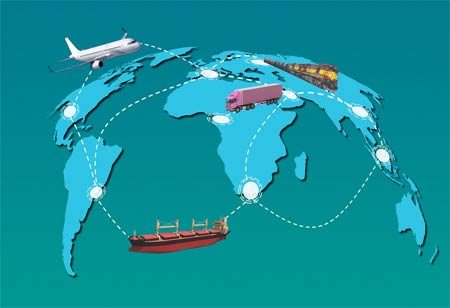THANK YOU FOR SUBSCRIBING
THANK YOU FOR SUBSCRIBING

By
Logistics Transportation Review | Friday, February 21, 2025
Stay ahead of the industry with exclusive feature stories on the top companies, expert insights and the latest news delivered straight to your inbox. Subscribe today.
European rail transport is undergoing modernisation, focusing on infrastructure upgrades, requiring collaboration between governments, businesses, and international organisations.
FREMONT, CA: Rail transport has been the backbone of European connectivity for over two centuries. As one of the most energy-efficient and sustainable modes of transportation, the European rail system showcases a legacy of engineering and societal integration. However, modern challenges necessitate addressing outdated infrastructure, digitising systems, and improving passenger experiences to meet a rapidly evolving transportation landscape.
European rail networks are undergoing significant modernisation efforts to enhance efficiency, sustainability, and passenger experience. Infrastructure overhauls remain a priority, with substantial investments in upgrading tracks, bridges, and tunnels. Countries like France and Italy have allocated billion-dollar budgets to revitalise rail infrastructure, exemplified by projects such as the Brenner Base Tunnel, which aims to improve freight efficiency and reduce travel times between Austria and Italy. High-speed rail expansion continues to reshape mobility across the continent, with initiatives setting new standards for rapid transit. The European Union’s Connecting Europe Facility (CEF) program further supports the development of cross-border high-speed lines, fostering economic integration and reducing travel disparities.
Simultaneously, digitalisation and smart rail systems are transforming rail operations. The European Rail Traffic Management System (ERTMS) is widely adopted to enhance signalling and communication, improving train punctuality and safety. AI-powered control systems also optimise predictive maintenance, allowing for early fault detection and minimising service disruptions. Sustainability remains a central focus, with the electrification of railways, the deployment of hydrogen-powered trains in non-electrified regions, and circular economy principles shaping the industry's future. Germany, for instance, has introduced hydrogen-powered trains to advance its decarbonisation goals.
Beyond infrastructure and technology, the passenger experience is evolving through innovations such as smart ticketing, onboard Wi-Fi, and improved station accessibility. Rail operators increasingly integrate multi-modal transport solutions, enabling seamless transitions between trains, buses, and bicycles, ultimately enhancing European travellers' convenience and connectivity.
Modernising rail transport yields substantial economic and social benefits beyond operational efficiency. Enhanced rail networks drive urban development, fostering economic growth and job creation through large-scale infrastructure projects. Expanding high-speed rail reduces travel times, making tourism more accessible and strengthening connectivity between major destinations. Additionally, improved rail systems help alleviate traffic congestion by encouraging commuters to shift from road to rail, reducing vehicle emissions and creating a more sustainable urban environment. Furthermore, advancements in rail accessibility promote social inclusion, ensuring greater mobility for elderly passengers, individuals with disabilities, and rural communities, thereby addressing social and regional disparities.
The future of rail transport in Europe depends on persistent collaboration among governments, private entities, and international bodies. Initiatives like the European Green Deal foresee rail as a cornerstone for achieving climate goals by 2050. Cross-country collaborations such as Rail Baltica, a planned railway linking the Baltic States to the European rail network, reflect the continent’s aspirations to foster connectivity and innovation.
Rail transport in Europe is at a crucial crossroads. By balancing historical legacy with technological advancements, the continent is modernising an old system to remain a global leader in railway innovation. Efforts in sustainability, digitalisation, and passenger focus make rail transport a vital element for addressing environmental and societal challenges in the 21st century.
I agree We use cookies on this website to enhance your user experience. By clicking any link on this page you are giving your consent for us to set cookies. More info





